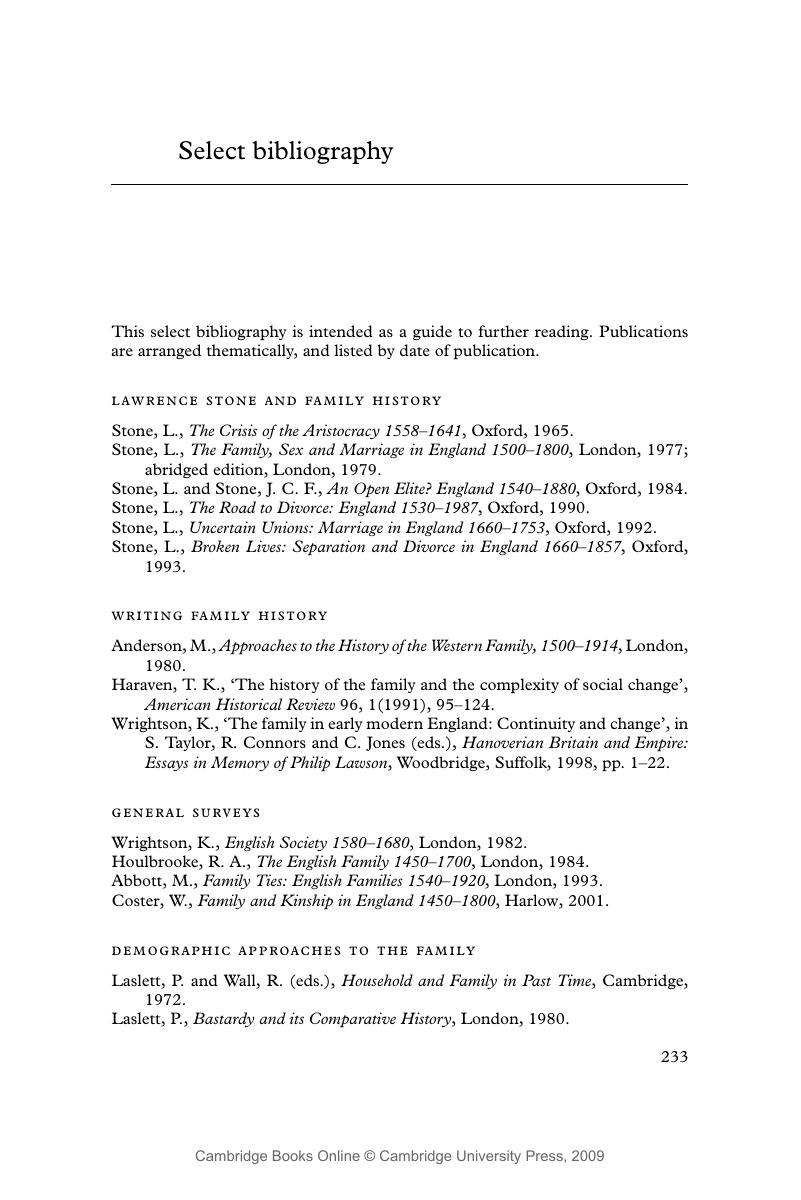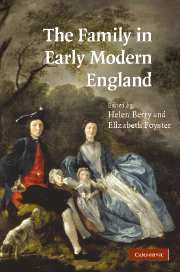Book contents
- Frontmatter
- Contents
- Preface
- Notes on contributors
- Anthony Fletcher
- 1 Introduction
- 2 Marriage, separation and the common law in England, 1540–1660
- 3 Republican reformation: Family, community and the state in Interregnum Middlesex, 1649–60
- 4 Keeping it in the family: Crime and the early modern household
- 5 Faces in the crowd: Gender and age in the early modern English crowd
- 6 ‘Without the cry of any neighbours’: A Cumbrian family and the poor law authorities, c.1690–1730
- 7 Childless men in early modern England
- 8 Aristocratic women and ideas of family in the early eighteenth century
- 9 Reassessing parenting in eighteenth-century England
- Select bibliography
- Index
- References
Select bibliography
Published online by Cambridge University Press: 31 July 2009
- Frontmatter
- Contents
- Preface
- Notes on contributors
- Anthony Fletcher
- 1 Introduction
- 2 Marriage, separation and the common law in England, 1540–1660
- 3 Republican reformation: Family, community and the state in Interregnum Middlesex, 1649–60
- 4 Keeping it in the family: Crime and the early modern household
- 5 Faces in the crowd: Gender and age in the early modern English crowd
- 6 ‘Without the cry of any neighbours’: A Cumbrian family and the poor law authorities, c.1690–1730
- 7 Childless men in early modern England
- 8 Aristocratic women and ideas of family in the early eighteenth century
- 9 Reassessing parenting in eighteenth-century England
- Select bibliography
- Index
- References
Summary

- Type
- Chapter
- Information
- The Family in Early Modern England , pp. 233 - 240Publisher: Cambridge University PressPrint publication year: 2007

